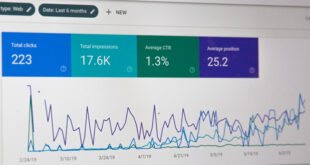There was a time when social media was something that was used to stay in touch with people. However, today it has become an important aspect of everyday life. Currently, there are around 2.46 billion active social media users and this figure is expected to rise to 2.77 billion by 2019.
Social media platforms have become a marketing tool that businesses are leveraging lucratively. Advertising budgets for social media have increased from $16 billion in 2014 to $31 billion in 2016 and are likely to exceed the $35 billion mark in 2017.
Proliferation and penetration of smartphones have given real-time access to their target audience at a lower cost. Today, more than 50 million small businesses use Facebook to interact with their customers. Out of these, 4 million do paid advertising on the platform.
However, the exponential rise in social media advertising has created a clutter that only a few businesses manage to break. Just having digital presence doesn’t suffice; to truly harness the power of social media, businesses need to have a clear-cut strategy.
Social media campaigns are not worth it if they are not generating any return on investment. To make a difference, you need to know how you are performing and you can do that by keeping an eye on the right analytics.

Here are five important metrics that you need to measure regularly;
1. Reach
Reach refers to the number of people who see your post directly. Reach is an important indicator since it shows the health of your digital presence. You may have a number of fans, but if your message’s reach is only, let’s say, 1% then you are probably wasting your resources on producing content.
Reach is important to measure the impact of your campaigns. Also, this metric helps you decide which channel is the most effective. Without tracking reach, you might end up wasting your resources on a channel that does not put across your message. Almost all platforms allow you to measure the number of followers. On Facebook, you can get an in-depth analysis of the number of likes from its Insights tab.
2. Share of Voice
Simply put, share of voice shows how many mentions within your industry are about your company versus that of the competitor. This metric is useful because it gives you relative performance so you know where you stand and what your goal is.
Also, share of voice allows you to measure the result of your efforts rather than just the amount that you have spent on advertising. You can easily keep a track of this measure through online tools such as Brandwatch Analytics.
This tool digs insights for you from billions of online conversations. To improve this metric, you need to be active on social platforms. If the frequency of your posts or tweets is low, there are high chances that you will be forgotten. Also, the number of mentions will increase when you engage your audience. Don’t treat social media merely as a content distribution channel.
3. Engagement Rate
Often businesses make the mistake of just focusing on the volume or reach of posts. While they are important indicators of interest, they do not give many insights on a standalone basis. The real measure is engagement rate, which shows if people are participating in conversations and if they are doing anything to spread the message.
You can easily measure engagement rate on Facebook under the Overview tab on your analytics page. The engagement rate shows you how many people have liked, commented or shared your posts. To increase your engagement rate, you need to keep in mind the timing of your posts.
If you share when people are at work, your posts are likely to be ignored. You can boost engagement by asking questions about your audience experience, or preferences. Contests are yet another way to pique consumers’ interest.
4. Conversions
The ultimate goal of advertising is to increase sales. Hence, your social media campaigns should have a conversion goal, which leads to return on investment. By improving your conversion rate, you can acquire more customers at lower acquisition costs.
Your conversion could be anything from a simple signup to purchase. To track conversions, you need to know where the lead originated from. You can do that by inserting a “cookie” whenever a user clicks on your ad and then tracking the user’s journey.
Measuring conversion on Facebook is quite simple. All you need to do is go to Ads Manager and select the actions you want to measure. The best thing about Facebook is that you can track activity across devices. For example, you can see if a user sees an ad on their mobile and makes purchase from their desktop.
5. Influencers
High influence means that the brand is being mentioned in publications. Influencers are those people who assist consumers in deciding which product to buy. They can be bloggers, or industry experts, who are specific to your product category.
They come at low cost and can give a boost to your audience in no time. A survey by Nielsen shows that only 33% people trust advertisements, while 90% trust recommendations from someone.
Social media influencers have a large number of followers, who trust the opinion of these influencers. Hence, influencers can give a boost to engagement and word-of-mouth at a faster rate than organic methods.
Social listening tools such as Mention have made it easier to track your supporters. Mention shows who is talking about your brand and helps you choose the ones that are influential. ASOS is perhaps the best example of a brand that has successfully managed to leverage influencers.
Social media platforms can give a boost to your brand equity. However, they are not of much help if used haphazardly. To use them effectively, you need a social media guide that clearly defines the objectives you want to achieve. These objectives should be realistic and trackable and the results should justify the investment you put in.
AUTHOR BIO
ABOUT Alycia Gordan
Alycia Gordan is a freelance writer who loves to read and write articles on healthcare technology, fitness and lifestyle. She is a tech junkie and divides her time between travel and writing. You can find her on Twitter: @meetalycia
 CoalesceIdeas Web and graphic design ideas for inspiration
CoalesceIdeas Web and graphic design ideas for inspiration




